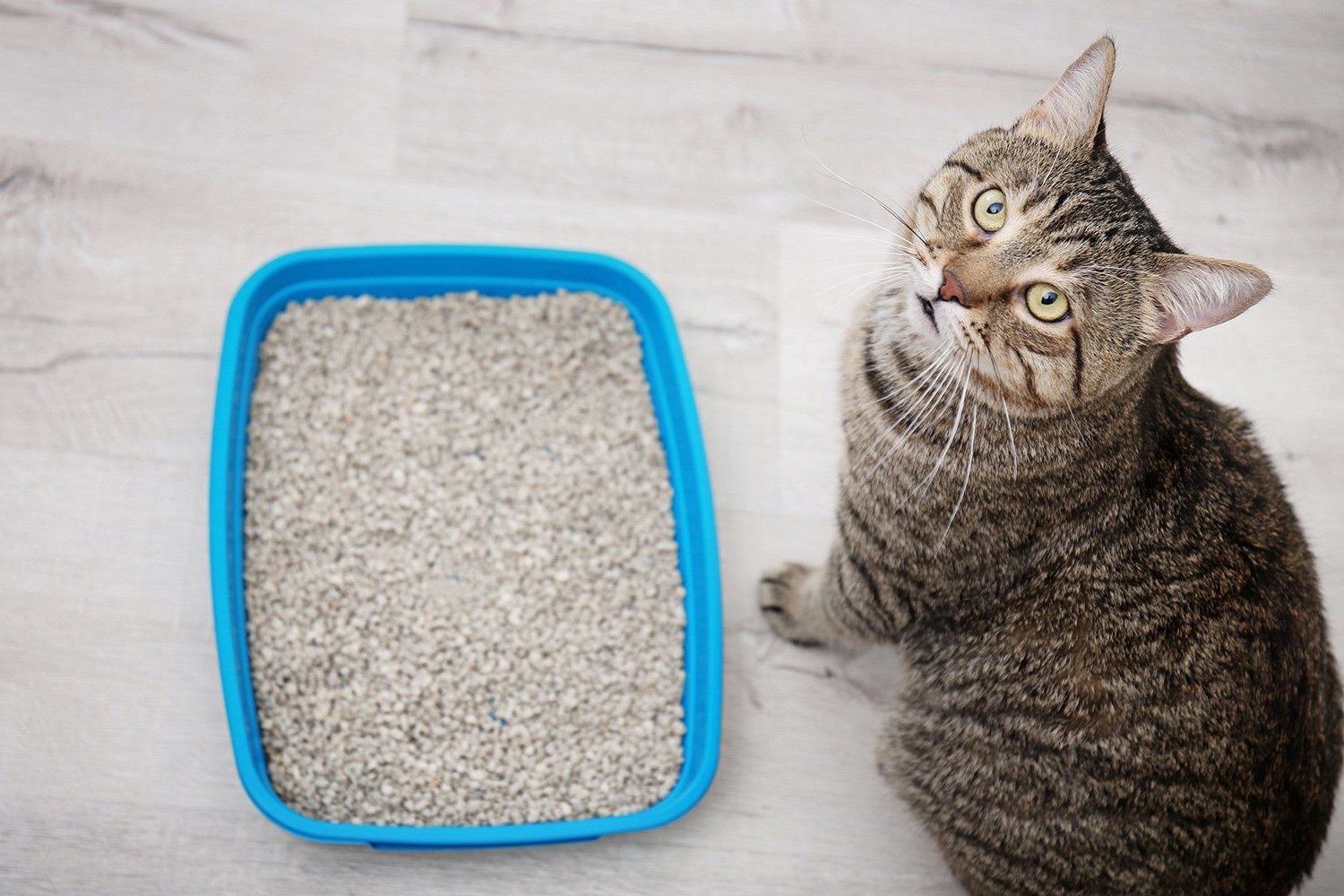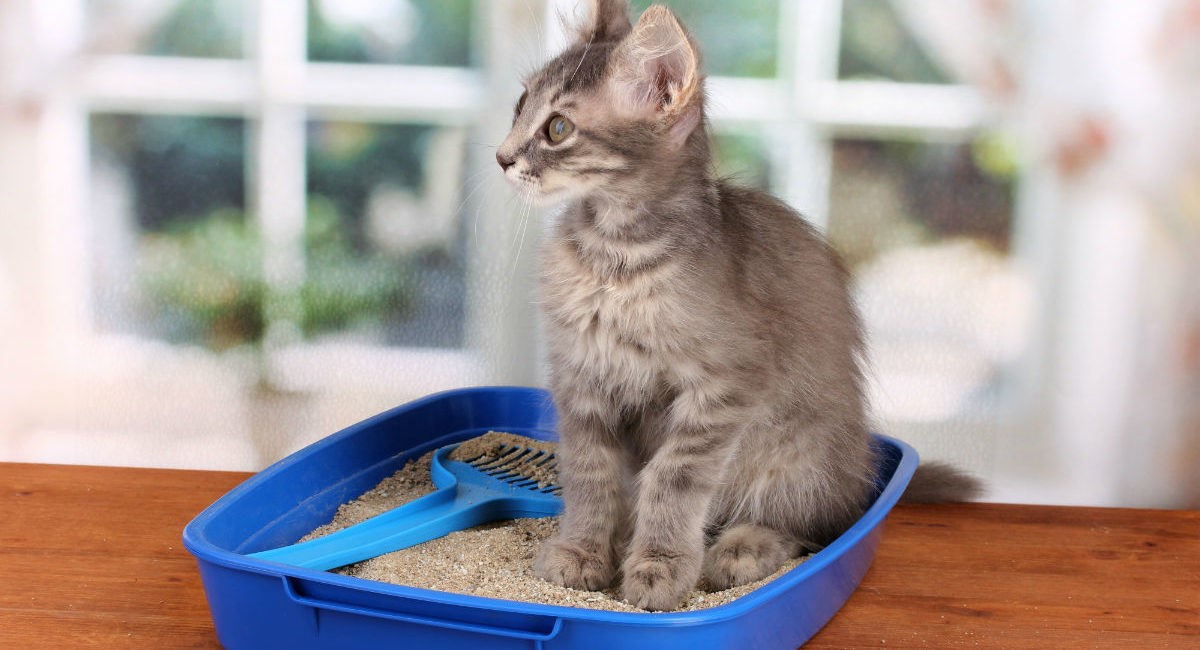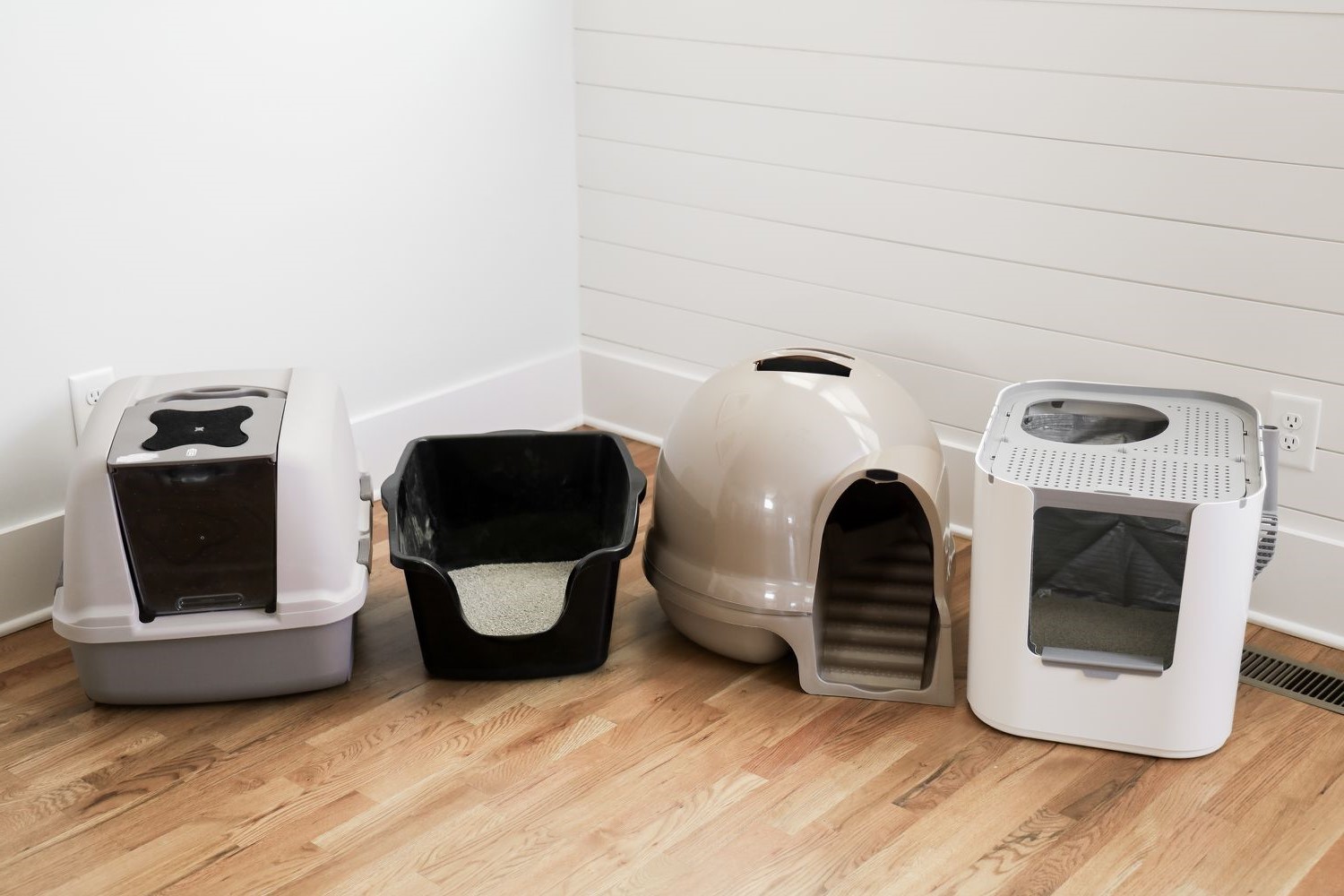Home>Storage & Organization>Kitchen Organizing Tools>How To Dispose Of A Litter Box


Kitchen Organizing Tools
How To Dispose Of A Litter Box
Modified: October 20, 2024
Learn the best ways to dispose of a litter box and keep your kitchen organized with the right tools. Find out how to make the process easy and efficient.
(Many of the links in this article redirect to a specific reviewed product. Your purchase of these products through affiliate links helps to generate commission for Storables.com, at no extra cost. Learn more)
Introduction
When it comes to maintaining a clean and hygienic living environment for your feline friend, proper disposal of the litter box is a crucial aspect that should not be overlooked. Whether you're a seasoned cat owner or a novice, understanding the correct steps for disposing of a litter box is essential for the well-being of both your pet and your household. By following a few simple guidelines, you can ensure that the process is efficient, sanitary, and environmentally responsible.
Properly disposing of a litter box involves several key steps, each of which plays a vital role in maintaining a healthy and odor-free living space. From emptying the litter box to cleaning it thoroughly and finally disposing of the used litter in a responsible manner, each stage contributes to the overall cleanliness and well-being of your home.
In this comprehensive guide, we will walk you through the step-by-step process of disposing of a litter box in a way that is safe for both you and the environment. By the end of this article, you will have a clear understanding of the best practices for managing your cat's waste and maintaining a fresh and inviting home environment. So, let's dive into the essential steps for properly disposing of a litter box and ensure that your furry companion has a clean and comfortable space to call their own.
Key Takeaways:
- Properly disposing of a litter box involves emptying, cleaning, and responsibly disposing of used litter. It’s crucial for maintaining a clean and healthy environment for your cat and your family.
- When replacing a litter box, ensure you have a suitable replacement ready. Consider repurposing the old box and follow local disposal guidelines to contribute to a clean and organized living space.
Read more: How Deep Should Litter Be In A Litter Box
Step 1: Emptying the litter box
Emptying the litter box is the first crucial step in the process of properly disposing of a litter box. This task not only helps in maintaining a clean and odor-free environment but also ensures the health and well-being of your feline companion. Here's a detailed guide on how to effectively empty the litter box:
1. Gather the necessary supplies
Before you begin emptying the litter box, gather all the essential supplies such as a scoop, disposable gloves, and a sturdy trash bag. These items will facilitate the process and help maintain cleanliness and hygiene throughout.
2. Choose an appropriate location
Select a well-ventilated area, preferably outdoors, to empty the litter box. This will minimize the spread of dust and odors inside your home. If outdoor space is not available, choose a well-ventilated room with easy-to-clean surfaces.
3. Scoop the litter
Using a scoop, carefully remove any solid waste and clumps from the litter box. Dispose of the waste in a designated trash bag, tying it securely to prevent any odors from escaping.
Read more: How Much Litter To Put In A Litter Box
4. Dispose of the used litter
Once the solid waste has been removed, it's time to dispose of the used litter. If you use clumping litter, ensure that the clumps are securely contained in the trash bag. For non-clumping litter, scoop out as much used litter as possible, ensuring that the box is left nearly empty.
5. Clean the litter box
After emptying the litter, it's essential to clean the litter box thoroughly to remove any remaining residue and odors. This will prepare the box for the next round of fresh litter, ensuring a clean and inviting space for your cat.
By following these steps, you can effectively empty the litter box, setting the stage for the subsequent cleaning and disposal processes. This initial step is critical in maintaining a hygienic and pleasant environment for both you and your feline companion.
Step 2: Cleaning the litter box
Cleaning the litter box is a crucial step in maintaining a healthy and hygienic environment for your feline friend. A clean litter box not only ensures your cat's comfort but also helps prevent the spread of bacteria and odors in your home. Here's a detailed guide on how to effectively clean the litter box:
-
Gather the necessary cleaning supplies: Before you begin cleaning the litter box, gather all the essential cleaning supplies, including mild detergent or pet-safe cleaning solution, a scrub brush or sponge, and access to clean, running water. These supplies will enable you to thoroughly clean and sanitize the litter box.
-
Empty any remaining litter: Ensure that the litter box is completely empty before proceeding with the cleaning process. Use a scoop or disposable gloves to remove any remaining traces of litter and waste, disposing of them in a designated trash bag.
-
Wash the litter box: Take the empty litter box to a well-ventilated area, such as an outdoor space or a utility sink. Using mild detergent or a pet-safe cleaning solution, thoroughly scrub the interior and exterior of the litter box with a scrub brush or sponge. Pay special attention to corners and crevices where residue and odors may linger.
-
Rinse and dry: After scrubbing the litter box, rinse it thoroughly with clean, running water to remove any soap residue. Once rinsed, allow the litter box to air dry completely before adding fresh litter. This step is crucial in preventing the growth of bacteria and maintaining a clean environment for your cat.
-
Sanitize the litter box: For an extra layer of cleanliness, consider sanitizing the litter box with a pet-safe disinfectant or a solution of water and white vinegar. This additional step can help eliminate any remaining odors and bacteria, ensuring a fresh and hygienic environment for your cat.
By following these steps, you can effectively clean the litter box, preparing it for the next round of fresh litter. A clean and sanitized litter box not only promotes your cat's well-being but also contributes to a pleasant and odor-free living space for you and your family.
Step 3: Disposing of the litter
Proper disposal of used cat litter is essential to maintain a clean and hygienic living environment for both you and your feline companion. Disposing of the litter responsibly not only minimizes odors and potential health hazards but also contributes to environmental sustainability. Here's a detailed guide on how to effectively dispose of the used litter:
-
Secure containment: After cleaning the litter box, ensure that the used litter is securely contained in a durable trash bag. Double-bagging the litter can provide an extra layer of protection against odors and leaks, especially if you are disposing of clumping litter.
-
Select a disposal method: Depending on the type of litter and local regulations, you have several options for disposing of the used litter. If you use biodegradable or flushable litter, check if it is safe to flush it down the toilet. Some municipalities allow for the disposal of used litter in green waste bins, while others may have specific guidelines for pet waste disposal.
-
Avoid composting: It's important to note that cat feces should never be composted, as it can contain harmful pathogens that are not destroyed through typical composting processes. Additionally, avoid disposing of used litter in regular recycling bins, as it can contaminate recyclable materials.
-
Check local regulations: Before disposing of the used litter, familiarize yourself with local regulations regarding pet waste disposal. Some areas have specific guidelines for handling pet waste, including used cat litter, to minimize environmental impact and public health risks.
-
Consider eco-friendly options: If you are environmentally conscious, consider using eco-friendly cat litter made from sustainable materials. Some eco-friendly litters are biodegradable and can be safely disposed of in compost bins or green waste receptacles, reducing the environmental impact of cat waste disposal.
-
Secure disposal: Once you have determined the appropriate disposal method, securely tie the trash bag containing the used litter and place it in the designated waste receptacle. If you are unsure about the proper disposal method, contact your local waste management authority for guidance.
By following these steps, you can effectively dispose of the used cat litter in a responsible and environmentally conscious manner. Proper disposal not only contributes to a clean and odor-free living space but also demonstrates a commitment to environmental stewardship and pet care.
Read more: How To Move A Litter Box
Step 4: Proper disposal of the litter box
Proper disposal of the litter box is a critical aspect of maintaining a clean and hygienic living environment for both you and your feline companion. When it comes time to replace the litter box, it's essential to ensure that the disposal process is carried out responsibly and in accordance with local regulations. Here's a detailed guide on how to properly dispose of the litter box:
-
Select a suitable replacement: Before disposing of the old litter box, ensure that you have a suitable replacement ready for your cat. Whether you opt for a traditional plastic litter box or explore alternative options such as self-cleaning litter boxes or eco-friendly alternatives, having a new litter box on hand will ensure a seamless transition for your pet.
-
Empty and clean the old litter box: Prior to disposal, thoroughly empty and clean the old litter box following the steps outlined in the previous sections. Removing any remaining litter, waste, and odors will prepare the box for proper disposal and prevent the spread of bacteria and odors.
-
Consider recycling or repurposing: If the old litter box is in good condition, consider repurposing it for alternative uses. Plastic litter boxes can be repurposed for gardening, storage, or other household needs. Alternatively, some recycling facilities may accept plastic litter boxes, depending on local recycling guidelines.
-
Check local disposal guidelines: Before disposing of the old litter box, familiarize yourself with local waste disposal guidelines and regulations. Some municipalities may have specific instructions for disposing of plastic or pet-related items, and it's important to adhere to these guidelines to ensure proper disposal.
-
Secure containment for disposal: Once the old litter box is empty and clean, secure it in a durable trash bag to prevent any residual odors or debris from escaping during transport. Double-bagging the litter box can provide added protection and containment.
-
Dispose of the litter box: Depending on local regulations, you may be able to dispose of the old litter box in your regular household waste, provided it meets the criteria outlined by your waste management authority. Alternatively, some areas may have designated drop-off locations for bulky items or specific disposal instructions for plastic items.
By following these steps, you can ensure that the old litter box is disposed of in a responsible and environmentally conscious manner. Proper disposal not only contributes to a clean and organized living space but also demonstrates a commitment to responsible waste management and pet care.
Conclusion
In conclusion, the proper disposal of a litter box is an essential aspect of maintaining a clean, hygienic, and welcoming environment for both you and your feline companion. By following the step-by-step guidelines outlined in this comprehensive guide, you can ensure that the process of disposing of a litter box is efficient, sanitary, and environmentally responsible.
Emptying the litter box sets the stage for the subsequent cleaning and disposal processes, allowing for the removal of solid waste and used litter in a manner that minimizes odors and potential health hazards. Cleaning the litter box thoroughly not only promotes your cat's well-being but also contributes to a pleasant and odor-free living space for you and your family. By utilizing the appropriate cleaning supplies and techniques, you can maintain a clean and sanitized litter box that meets the highest standards of hygiene.
Disposing of the used litter is a critical step in the process, requiring careful consideration of the type of litter used, local regulations, and environmental impact. By securely containing the used litter and selecting the appropriate disposal method, you can minimize the environmental footprint and ensure responsible waste management practices.
Proper disposal of the litter box itself is equally important, as it involves preparing for a seamless transition to a new litter box while adhering to local waste disposal guidelines. Whether repurposing the old litter box or following specific disposal instructions, ensuring that the old litter box is disposed of responsibly contributes to a clean and organized living space.
By incorporating these essential steps into your routine, you can maintain a healthy and inviting environment for your cat while demonstrating a commitment to environmental stewardship and responsible pet care. Ultimately, the proper disposal of a litter box is a testament to your dedication to providing the best possible living conditions for your feline companion, ensuring their comfort and well-being while upholding the highest standards of cleanliness and environmental responsibility.
Frequently Asked Questions about How To Dispose Of A Litter Box
Was this page helpful?
At Storables.com, we guarantee accurate and reliable information. Our content, validated by Expert Board Contributors, is crafted following stringent Editorial Policies. We're committed to providing you with well-researched, expert-backed insights for all your informational needs.














0 thoughts on “How To Dispose Of A Litter Box”